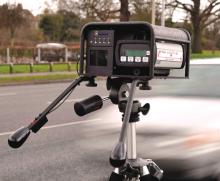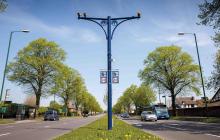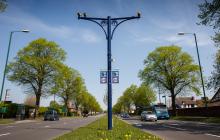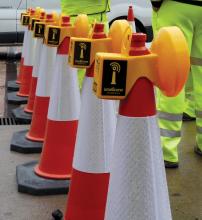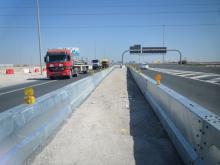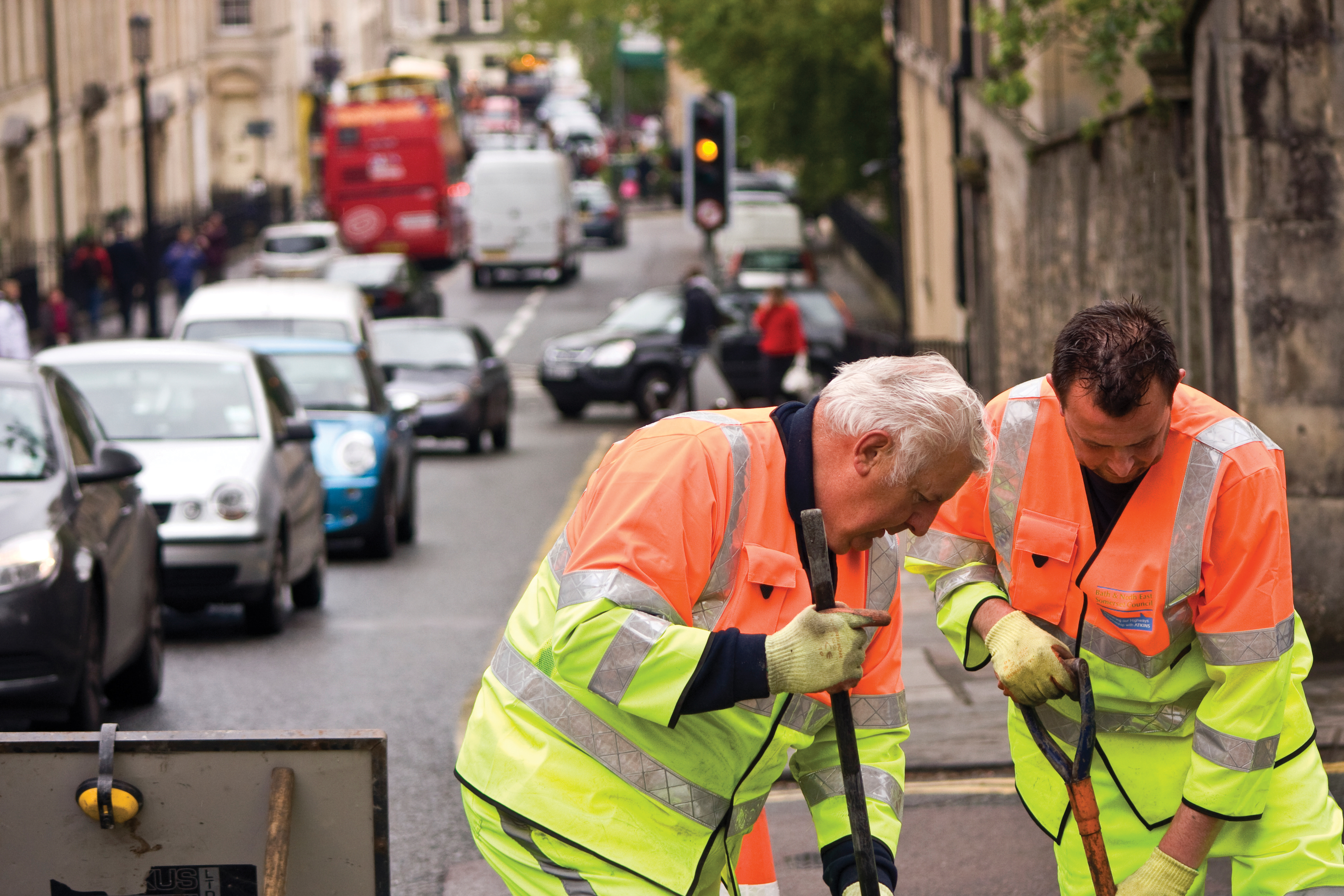
Some of the latest speedometer technology has been successfully trialled in French highway work zones, while tireless work continues across Europe and the United States to reduce the number of work zone deaths and serious injuries involving road workers and motorists. Guy Woodford reports
The number of roadworkers being killed and seriously injured on England’s motorways and major trunk roads more than doubled between 2007 and 2010 – from no deaths and 14 serious injuries.This rise has led to to major campaigns to educate motorists, particularly lorry drivers, into being more careful when they pass roadworks. Leading UK engineering design consultancy,
The programme, called Safe by choice, is tackling three of the key safety issues operatives face: the role Impact Protection Vehicles (IPVs) play in protecting roadworkers, the use of CCTV on Stop/Go boards to identify drivers who ignore the signs and drive straight through works areas, and the use of CCTV in vehicles to protect operatives when members of the public drive through traffic management areas.
To increase visual impact, Atkins has developed a training DVD for lorry drivers as a result of an accident in which an employee’s Impact Protection Vehicle was hit by a lorry while he was protecting a team of road workers on the carriageway. The DVD is being distributed to a number of road haulage companies across the UK, and is also posted on YouTube.
Atkins says some of its workers have been the target of abuse from members of the public, from being sworn at, having drink cans thrown at them or cars driving erratically through closed off work sites. In 2012 there were 56 reported cases.
Steve Clayton, from Atkins’ Somerset Highways commission, developed new CCTV Stop/Go boards as a way of gathering evidence to assist in prosecuting offenders from similar incidents.
“CCTV cameras in the Stop/Go board enable us to film anyone driving through the stop sign or anyone found to be abusing our people,” said Clayton. “We can then take the footage to the police who could file for prosecution. These sorts of measures are now vital as the only alternative if this sort of dangerous behaviour continues may be to close roads in order to carry out works.”
During 2012 Atkins had 97 reported cases where members of the public in vehicles entered highway work zones and of those 97, 10 included some form or verbal and/ or physical abuse. To tackle the issue of the public driving through traf fic management sites, Atkins is investigating having CCTV cameras in vehicles. It will mean that offending members of the public, whose actions are said to be putting operatives’ lives at risk, could find themselves being questioned by the police.
Des Bourne, managing director of Atkins’ highways & transportation operational services business, said: “Safety is a key priority in our business. I want to ensure that as a business we are doing everything possible to ensure our staff are going home safely at the end of each day.”
Meanwhile, over the English Channel in France, Two
Run during the rst half of 2012 and aimed at giving the French government more information about the usability and impact of semi-stationary traf fic enforcement systems, the RS-GS11s measured 2.75 million vehicles over 4,200 hours, recording 286,000 offences.
Found to have an average battery cycle of eight days, the RS-GS11 speedometers were installed on a different highway each week. They were transported by a truck with a small crane and, according to Gatso, the speedometers are very easy to install.
The semi-stationary RS-GS11s are said to operate very similarly to the pole mounted and tripod RS-GS11 systems. The radar antenna measures the speed of passing vehicles on the four lanes adjacent to the speed enforcement system. When a passing vehicle is found to be exceeding the set speed limit, one or two high quality images are taken.
The images are packaged with the violation data in a single, secure digital file and saved to a built-in storage device. The violation images can be viewed from a laptop in the vehicle or can be transferred to a back office system. Options for the transfer include a USB drive or transmission via a mobile network.
The successful pilot was said to have noted a significant increase in violations during weekends and holidays. A small number of speeding trucks were among the violating vehicles. Gatso says that no vandalism was reported to have been suffered by the two RSGS11s during the pilot.
A tender has since been announced for the purchase of 20 semi-stationary speedometers for their permanent use in different parts of France. Meanwhile, Gatso has launched the T-Series solution platform which the company says offers significant benefits over the more traditional RS-GS11 used in the 2012 pilot. Gatso says these benefits include improved light sensitivity, reduced system size and weight, auto alignment, integrated event video, live video, and Wizard-based setup.
During 2013, Gatso says it is planning to introduce the next generation semi-stationary enforcement systems built around the T-Series solution platform.
In autumn 2012, two
From March 2013 any new UK roadworks projects will be equipped with Truvelo’s new digital D-Cam P speed camera, with 3G connection for image transfer to a police force’s back-office. The D-cam captures a single image for each speed offence, thus is said to allow a fast transfer of images to the back-office.
First 10 years of memorial
The National Work Zone Memorial Wall in the United States reached its 10th anniversary in 2012. It was created by the
There is strong evidence that the Memorial Wall and other American work zone safety campaigns are working, given the national 44% drop in deaths from motor vehicle crashes in highway work zones over a 10-year period. The latest available figures from the
European Union tackles work zone safety
The improvement of safety in highway work zone (WZ) areas was a priority for the
During a meeting in Paris in May 2012, chairman of the ERF Working Group John Kreps and chairman of the Technical Committee 226 (Road Equipment) Michel Bry agreed to create a CEN/TC226 informal working group on road WZ safety to deliver the first guidelines. The guidelines will represent a guide to adopt voluntary signalisation standards to improve safety in WZs for the products covered by the CEN/TC 226 on Road Equipment.
The work of the informal working group will prepare inventory and compare the different regulations and practices concerning WZ safety in the voluntary countries.
It will also identify key assets for WZ safety, such as the functional and physical separation between workers and traffic, preservation of traffic flows, clarity in the directives, and relevance of the WZ information to the real road/works conditions.
Pointing out the best practices for WZ design, recommendations for making the best use of road equipment, and providing orientations to ensure safer and more uniform WZs across Europe, especially on the TERN, will also be part of the informal working group’s guidelines.
The guidelines will be presented in June 2013 during the annual meeting of the CEN/TC 226.
In parallel to this initiative, the ERF Working Group has continued collecting country by country information on WZs. To date, information has been collected from Germany, France, Belgium, Italy, Spain, Norway and Austria on road equipment (horizontal road markings, vertical signs, road restraint systems, beacons, vehicles) used in mobile, short term, and long term applications on motorways, primary roads, secondary and local roads, and in approach, activity and termination areas.


